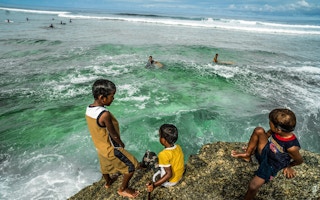ADB’s recently launched Meeting Asia’s Infrastructure Needs report is timely for the Pacific. The study estimates that this region requires the highest relative level of investments—both per capita and as a percentage of GDP—of all the regions in which ADB has operations.
Pacific island countries face unique and broad challenges. Their remoteness and generally small populations preclude them from benefiting from economies of scale in investments, and services are often more costly to produce and maintain.
In addition, Pacific island countries are highly vulnerable to natural disasters. Cyclone Winston which hit Fiji last year resulted in total damage estimated to be over 30 per cent of GDP.
Addressing the region’s infrastructure needs requires innovative solutions, better planning, and the combined efforts of the global development community to bring the Pacific’s infrastructure to a point where it can support higher levels of sustainable growth.
ADB works with development partners in the Pacific—Australia, the European Union, the European Investment Bank, the Japan International Cooperation Agency (JICA), New Zealand and the World Bank—to deliver coordinated assistance and relevant research through a technical assistance program managed by ADB – the Pacific Region Infrastructure Facility (PRIF).
ADB plans to roughly double its financial commitments in the region, with an emphasis on infrastructure and its regional partners are also gearing up their assistance.
Here are a few priority areas where action is urgently needed and which ADB and, more broadly PRIF partners, are addressing:
- Household access to electricity across the Pacific is low at 30 per cent, but more grid connections is not always the right answer (in fact access in urban areas is relatively high and comparable to the OECD). The challenge is to bring coverage to rural areas and the outer islands, including through off-grid electricity, powered by locally abundant (and renewable) sources like solar and wind.
The approaches must be sustainable, so their implementation needs to factor in processes (such as performance based contracts) and budgets for maintenance. - The report notes how building a road in the Pacific can cost four times as much as elsewhere. We need innovative solutions to reduce the cost of providing connectivityto a part of the world that needs it more than most. One innovation to reduce this cost is implementing new pavement design techniques for low volume roads, using locally available materials.
- Marine transport is critical to Pacific island countries, but port construction and maintenance are very expensive. In Nauru, ADB is seeking cofinancing for an ambitious project to modernize the country’s only port, and JICA has been active in upgrading ports in Kiribati and Samoa.
Inter-island (local) transport is crucial to populations living on outer islands, but it is constrained by inadequate and unsafe jetties and wharves. We need to encourage the private sector to play a bigger role in providing inter-island shipping and transport through public-private partnerships. - There are over 700 airports and airstrips in the Pacific, but only about 7 per cent are paved. Several aviation projects by PRIF partners are underway to improve the quality and safety of air transport facilities, for example in Samoa and on the island of Kirimati (in Kiribati), and many of them are working to strengthen the regional aviation authority. Maintenance is again essential.
- There is a marked disparity between urban and rural areas in access to water services, which are generally not continuously available. In some atolls, groundwater is a limited resource that cannot keep up with growing populations. It’s time to prioritize investments in water transmission, minimize leakage, and maximize rainwater harvesting.
- Lack of sanitation is an even bigger problem in rural areas, where coverage is significantly lower than water. Land use constraints exacerbate this situation There have been advances in cost effective sanitation techniques that have been identified which need to be more systematically built into development projects.
- Last but not least, the report stresses the urgency of addressing climate change. This is crucial for the Pacific, home to 8 of the world’s 20 most vulnerable countries (ranked by average annual disaster losses as a percentage of GDP). PRIF is researching approaches for affordable coastal protection, and has identified an approach which uses stacked concrete blocks which is more robust and provides protection against higher waves.
The development challenge in the region is to provide sustainable, resilient infrastructure to remote populations in areas where a lack of economies of scale make projects more costly.
PRIF is already doing innovative research on affordable coastal protection, pavement design techniques, and sanitation options. Sharing of best practices and further coordinated development assistance will also help.
The Pacific’s infrastructure gap is large. But we can help to close it through innovative and coordinated assistance, which should also be affordable for small island economies.
Sanjivi Rajasingham is Strategic Advisor, Pacific Region Infrastructure Facility. This post is republished from the ADB Blog.











